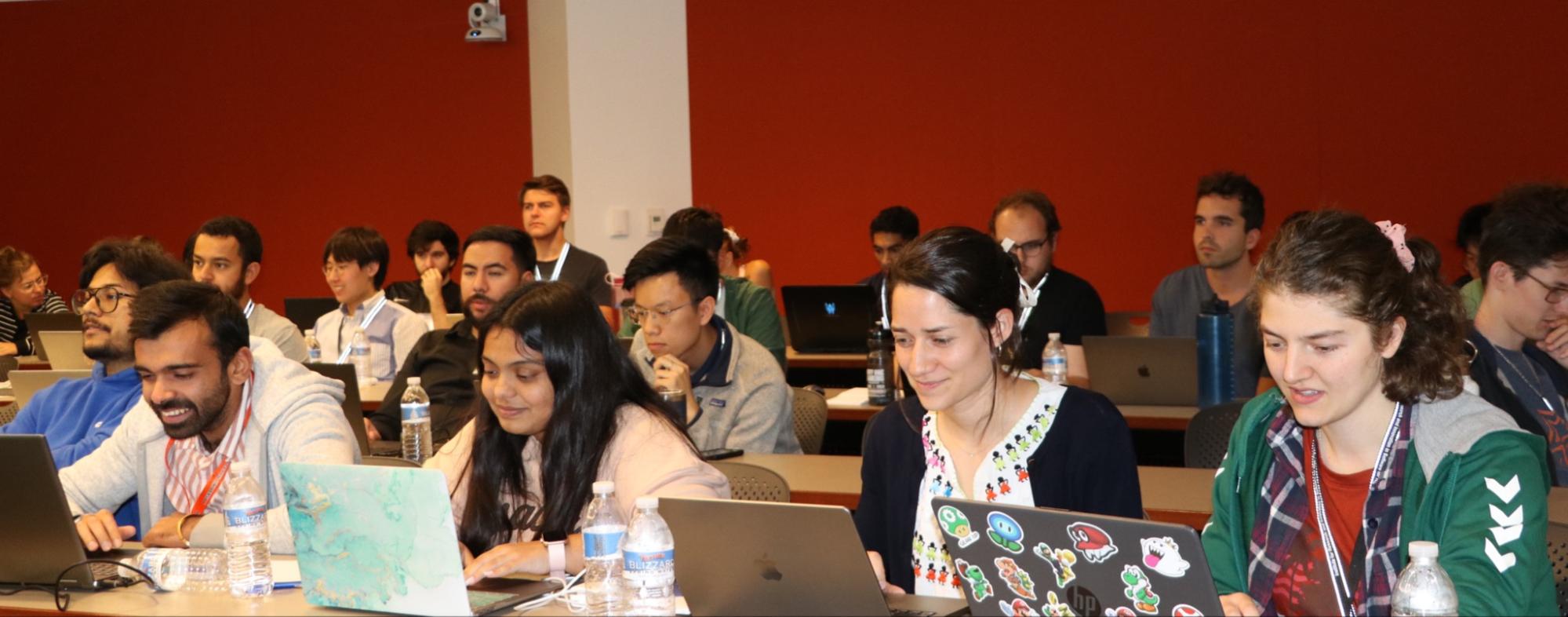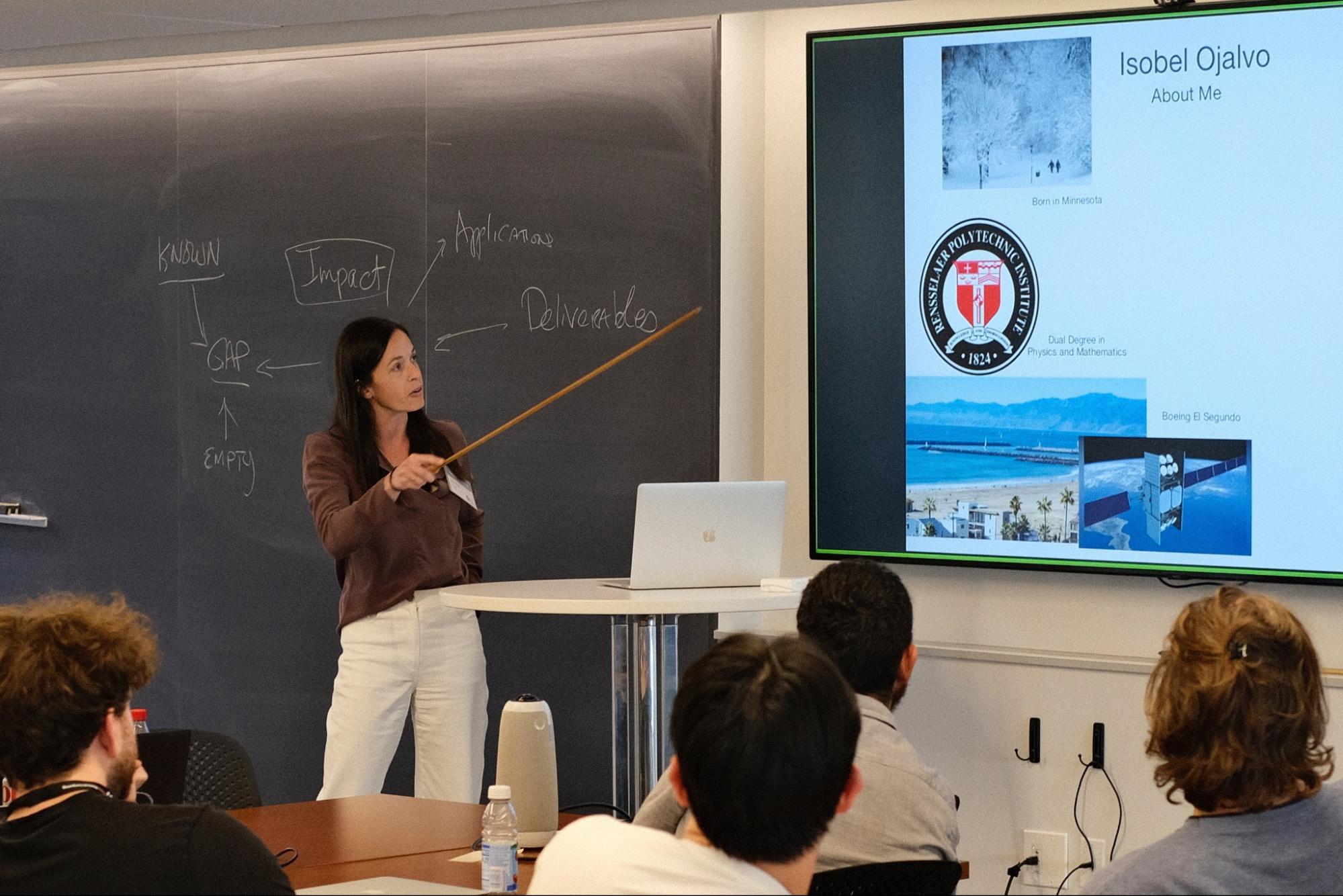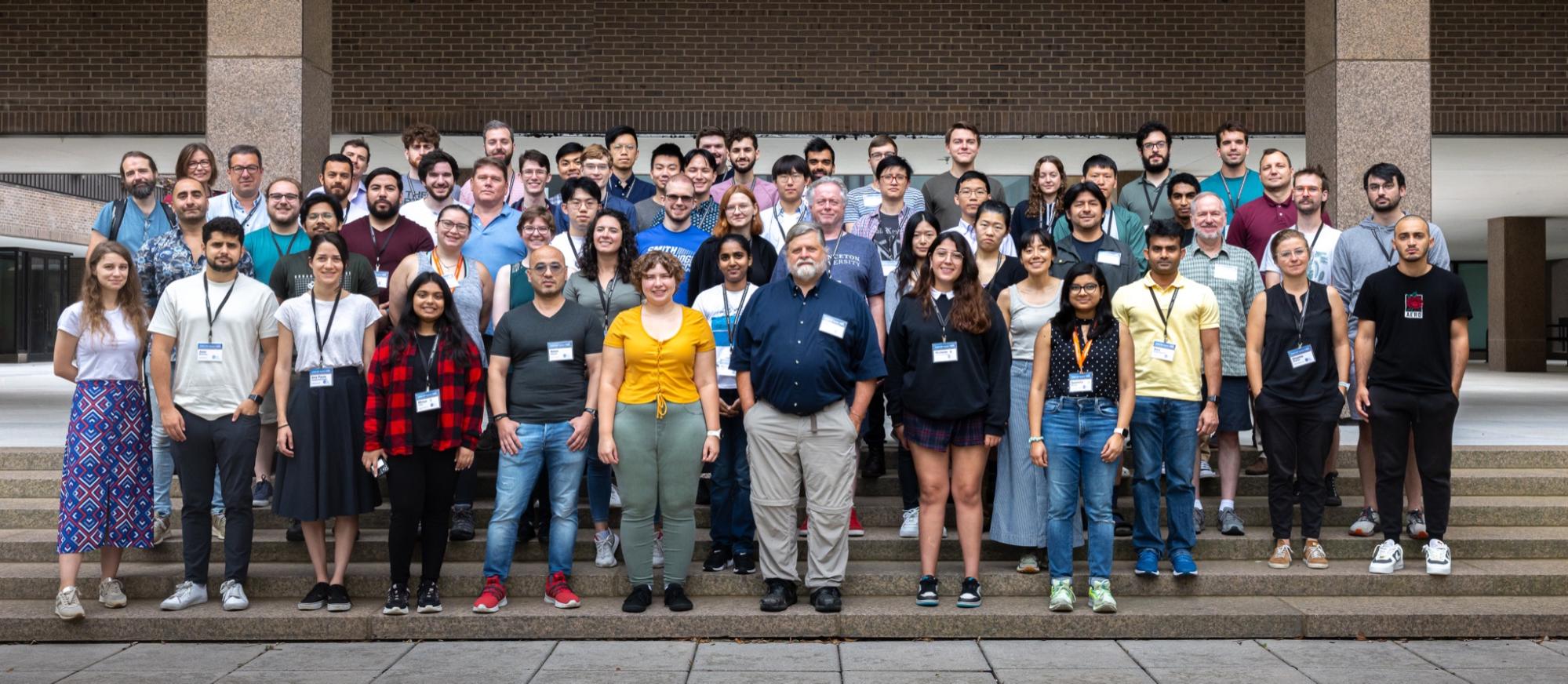For the fifth year, a group of high energy physicists ranging from undergraduates to post-doctoral researchers traveled to the Princeton University campus this summer to participate in the Computational and Data Science for High Energy Physics, or CoDaS-HEP, school. From July 17 to 21, the students learned about and practiced the latest tools, methods, and techniques in computational high energy physics. The school is organized by the NSF-funded IRIS-HEP software institute headquartered in the Princeton Institute for Computational Science & Engineering, with funding from the NSF CyberTraining program.
This year, in addition to CoDaS-HEP, a select group of graduate students stuck around campus for an extra week to complete the inaugural Computational HEP Traineeship Summer School. The new school was geared toward students participating in the DOE Traineeship in Computational HEP programs. Throughout the week, the students deepened their computational skills with a series of workshops which allowed them to collaborate and learn with others.
In the recent past, there was no field-wide formal training forum for junior high energy physicists to meet and discuss computing and software development for their experiments. “People would be interested in computing and would find one another because they’re working on software but there was no sort of coherent environment to bring people together,” said Peter Elmer, senior research physicist at Princeton and executive director at IRIS-HEP. “For me, the really interesting thing is facilitating the interactions between people with these software and computing data science interests.”

Instructor Tim Mattson (INTEL) discusses an example exercise with CoDaS-HEP participants. Photo credit: Peter Elmer, Princeton University.

Participants at the CoDaS-HEP summer school during hands-on sessions. Photo credit: Floe Fusin-Wischusen, Princeton University.
CoDaS-HEP
The CoDaS-HEP training camp was born out of a need to provide physicists the computational skills they weren’t learning in their school curriculums. It’s difficult to take an established curriculum and add new, significant portions to it dedicated to teaching students how to code, said Henry Schreiner, a computational physicist at Princeton University. And yet, “competitive research requires coding skills,” he said.
The need for physicists who are skilled in coding is especially pertinent in high energy physics. The Large Hadron Collider, or LHC, which smashes protons together at CERN in the search for answers to some of physics’ greatest questions, produces some of the largest academic datasets in the world. Currently, the LHC is undergoing significant upgrades to reach higher luminosities. These upgrades will increase the amount of data generated by the facility by tenfold. So, it’s necessary that the field has physicists who can create sustainable software infrastructure to bring particle physics to its next stage.
Schreiner has been involved with CoDaS-HEP as an instructor since 2019. “I think it’s great that there are opportunities like this now where you can come in and learn about coding and programming,” he said. “When I did it, you just had to learn it yourself.”
In 2022, the CoDaS-HEP summer school made its return to in person training for the first time since the beginning of the Covid pandemic. Schreiner said that for the first time since 2019, the coding school was back to full capacity. “The in-person attendance was promoted back to where it used to be,” he said. “That was really nice to see.”
About 50 high energy physicists at a range of skill levels gathered on the Princeton campus on July 10 to begin the week-long CoDaS-HEP series of lectures and workshops. “I really enjoyed doing the interactive activities,” said Elise Chavez, a Ph.D. candidate in high energy experimental physics at the University of Wisconsin, Madison. Rather than doing just straight lectures, the instructors incorporated demos so that the students could follow along and learn by doing.
There are so many tools and frameworks out in the field that software engineers have already built. But, software engineers enjoy building things by nature, Schreiner pointed out, and so often they’ll build their own frameworks rather than seek out the existing tools created by other engineers. “We end up with dozens of different analysis frameworks that people have written,” Schreiner said. It would be much more productive if software engineers worked together to create tools that can be shared, “instead of building our own tools over and over and over and over again,” Schreiner said.
The CoDaS-HEP summer school helps expose physicists who are just starting out to the various tools that are already out there. “The most valuable thing for me is that the summer school exposed me to a lot of things that I had never seen before,” said Aaron Wang, a Ph.D. candidate in physics at the University of Illinois Chicago. “Having that exposure lets me know when to use which tool and it guides me in what I should be learning on my own.”

Isobel Ojalvo (Princeton University) talks about the evolution of her career in experimental High Energy Physics. Photo credit: Peter Elmer, Princeton University.
A new computing camp
After completing a week of training with CoDaS-HEP, 16 graduate students stayed on the Princeton campus to complete the first year of the Computational HEP Traineeship Summer School. The summer school brought together students participating in three different DOE-funded computational high energy physics trainee programs.
“One of the things we’re trying to do in the training program is not only teach people how to write software, but teach people really how to be computing professionals in our high energy physics collaboration,” said Jason Nielsen, a particle physicist at the University of California, Santa Cruz. Nielsen is the principal investigator for the Western Advanced Training for Computational High-Energy Physics (WATCHEP), one of the three national programs funded by the DOE.
The DOE computational programs match students with high energy physics projects at labs across the country. Over the course of two years, the students are expected to participate in research and attend the summer training camps. Chavez is a part of the Training to Advance Computational High Energy Physics (TAC-HEP), the DOE funded program which works with students Princeton University, the University of Wisconsin-Madison, and the University of Massachusetts. She said she enjoyed that the training camp brought her in touch with other students nationally who she could network and collaborate with.
Chavez’s project has her working on software development for the Elastic Analysis Facility at Fermilab, which aligns with her future career goals of one day working as a staff scientist at the lab. In addition to getting to network through the program, “I’m also showing that I can be useful in a national lab,” Chavez said. “I’m getting that experience that I just would not normally get just doing a traditional Ph.D.”
Wang, who is participating through the DOE-funded C2-THE-P2 program, also joined the traineeship with the hope of bolstering his future employability. “I thought that working for a large collaboration and with so many people that have so many experiences could teach me a lot of very strong skills that I can apply later on,” he said.
Nielsen said in the future he hopes the DOE-funded programs and their related training camps continue to grow and evolve. Applications for the next year’s cohort of trainees opens this fall. “The summer school is a great place to get more engagement,” Nielsen said. The camp further provides the opportunity to meet other members of the high energy physics community, “all with the goal of developing them into the next generation of leaders for software and computing.”
